Why are there 2 capacitors in it?
These capacitors, initially are 0V. When power is applied, it flows through the 10Ω resistor and charges these. If left for long enough, they will reach 30V, same as the supply.
There are two, and of differing values, because:
- Most 100nF capacitors have very low ESR or equivalent series resistance. This means the capacitance inside has very little resistance associated with it, so can generate very high current spikes.
- Most 10µF capacitors have moderate ESR.
So the usage of both is implying that one is good at giving a really strong, very short pulse to get the LED lit quickly, while the other will help extend the pulse length.
The forward voltage of the stated LED (4V) seems to be a lot less than the 30V of the PSU. I know to drive it at higher currents the forward voltage needs to be increased but cannot quite see how this is happening in this circuit.
Assume the capacitors are fully charged. When the MOSFET gate is "fired" or raised up to 10V, the drain (top) and source (bottom) pins essentially become a low-value resistor, perhaps 0.1Ω. Thus, the charged capacitors dump their charge, very quickly, into the LED, through the MOSFET, through the 10mΩ resistor, and back the the capacitors.
Then the capacitors will be nearly depleted, so will recharge again, from the battery and 10Ω resistor.
I'm assuming the 10M Ohm resistor is a pull down resistor for the MOSFET.
This is not a 10 MEG Ohm (10,000,000Ω), but a 10 milli-Ohm (.01Ω) resistor. Capital M is always millions. This is here for two reasons:
- Limit the maximum current that can go through the LED
- Measure the voltage across the resistor during the pulse, and from this, the current (and then power) can be calculated.
Note I'd consider this a fairly dangerous circuit. There is little preventing the LED from being damaged; if the supply voltage is too high or capacitor values too large, the current spike could destroy the LED.


